Osaka, Japan - Travel

Attractions and Things to Do in Osaka
Osaka Travel Guide
Osaka was often called “Mizu no Miyako”- “the capital on the water.” It earned the nickname “Japanese Venice” because the city is interwoven with natural riverside and artificial canals featuring over 1000 bridges. Osaka is also celebrated as the culinary capital of Japan due to its varied cuisine and pro chefs. It is a vibrant and merry city, offering many dazzling attractions. Osaka’s stunning architecture and friendly residents add to its charm, making it a captivating destination for travelers worldwide.
Osaka has a population of 2.7 million, predominantly Japanese. However, the city has the largest community of zainichi Koreans (long-term Korean residents of Japan). Locals typically converse in Kansai-ben, a dialect of Japanese.
Osaka Tours
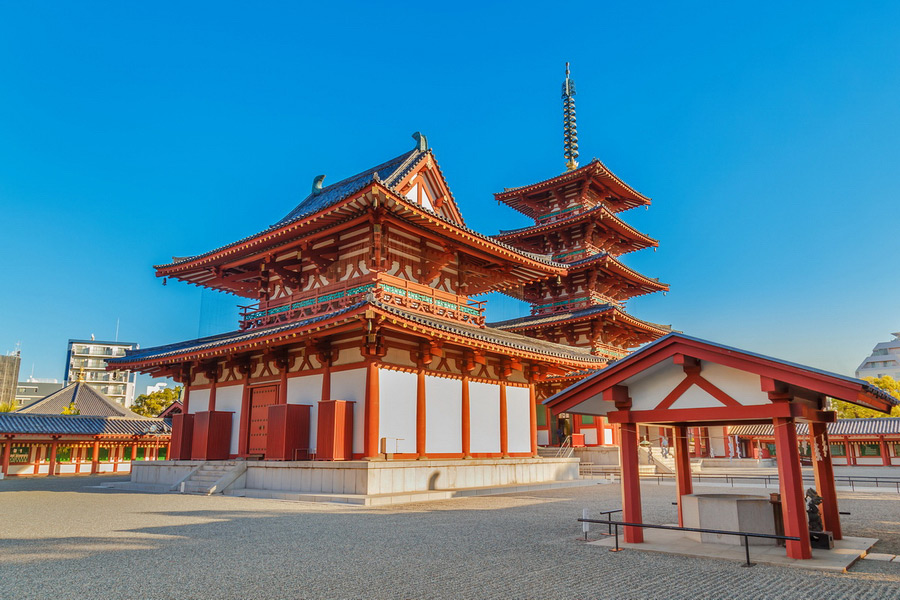
If you are wondering how many days you need for the Osaka tour, then 2 and 3 days should be enough to see all the highlights and indulge in delicious food. However, you can easily alter the number of days if you are staying longer and tailor your Osaka itinerary depending on how much time you have.
For example, you can see Osaka Castle, Shitennoji Temple, Tsutenaku Tower, and the Shinsekai neighborhood in one day. With two days on your travel plans, you can add Universal Studio Japan or Nara Park.
History of Osaka
The city's history dates back at least 1,600 years. The ancient chronicles, Jimmu, mention the Naniwa settlements that occupied the current territory of Osaka in the 4th century. Naniwa means “swift waves” in Japanese. Three centuries later, it became a crucial part of Yamato, the first Japanese state formation. Furthermore, Naniwa served as the capital of Yamato for the next two centuries. The strategic location (access to the Seto Inland Sea and the intersection of land trade routes) defined Osaka as the principal trade point of the country.
Furthermore, the city saw a short period of decline. Still, in 1532, the destroyed imperial palace was transformed into the Ishiyama Honganji temple, and the area around it developed into a sizable community. It was around this time that the name “Osaka” (great hill) became widespread.
Osaka has survived several wars, yet the city has continued to be the primary trading hub in Japan, encouraging the growth of culture and arts. It is no wonder Osaka is home to Kabuki theater, bunraku puppet theater, and woodblock prints and paintings called ukiyo-e.
Japan became open to the outside world during the Meiji Restoration period (1868-1889). Consequently, it gave Osaka a new incentive to trade and manufacturing.
In the following years, the city faced significant devastation only once, when it was virtually ruined during WWII. Nevertheless, post-war Osaka was soon rebuilt and started to advance quickly.
Today, the city is one of the strongholds of the Japanese economy, hosting various international forums. For instance, the first international EXPO took place in 1970. The next one is scheduled for 2025. And the members of the G20 met in Osaka in 2019.
Landmarks and Attractions in Osaka
Here’s our list of must-visit destinations, categorized by interest, to explore the best parts of Osaka.
Religious Sites
Osaka’s Buddhist temples and Shinto shrines reflect the city’s history and culture. From the bustling streets of Namba to the serene gardens of Minoo Park, these sacred landmarks are well-appreciated by foreign visitors.
Osaka Tenmangu Shrine
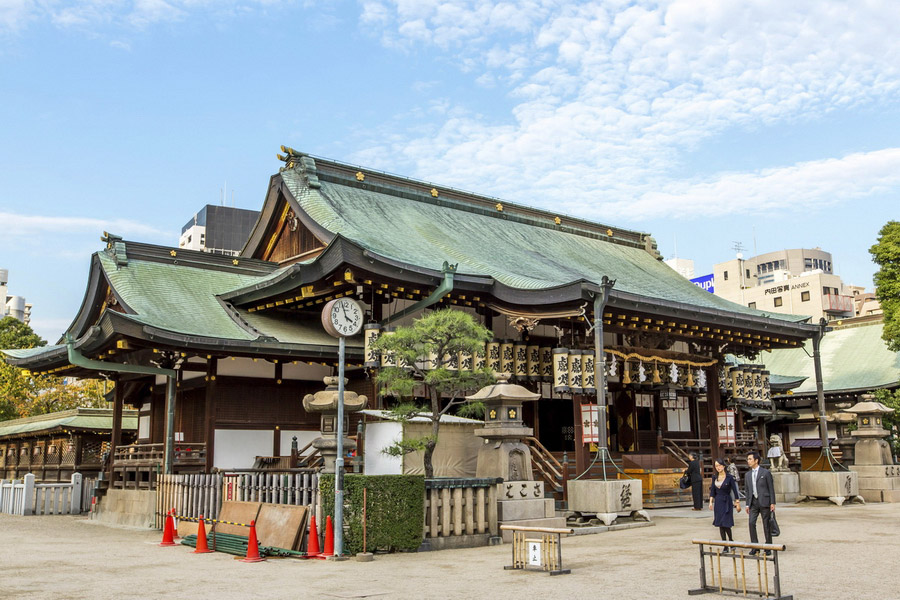
Osaka Tenmangu is a Shinto shrine in the Kita quarter of Osaka. One of the biggest festivals in Japan, Tenjin Matsuri, is held here every year. If you visit Osaka in late July, you will witness the grandeur of the celebration with huge land and sea processions.
Shitennoji Temple
Shitenno-ji, or the Temple of Four Heavens, is one of the oldest temples in Japan that was burned down a few times throughout the centuries. The current reconstruction reflects the original 6th-century design. It’s a very quiet and peaceful place with beautiful surroundings. You can easily reach this site from Tennoji Station.
Sumeiyoshi Taisha Shrine
Make sure to add the Sumiyoshi Taisha Shrine to your Osaka travel list. The shrine is in the outer suburbs of Osaka. It takes approximately 30 minutes to get there. The site boasts three temples, an iconic red bridge, wonderful Instagram-worth gardens, and ponds with fish and turtles.
Osaka Castle
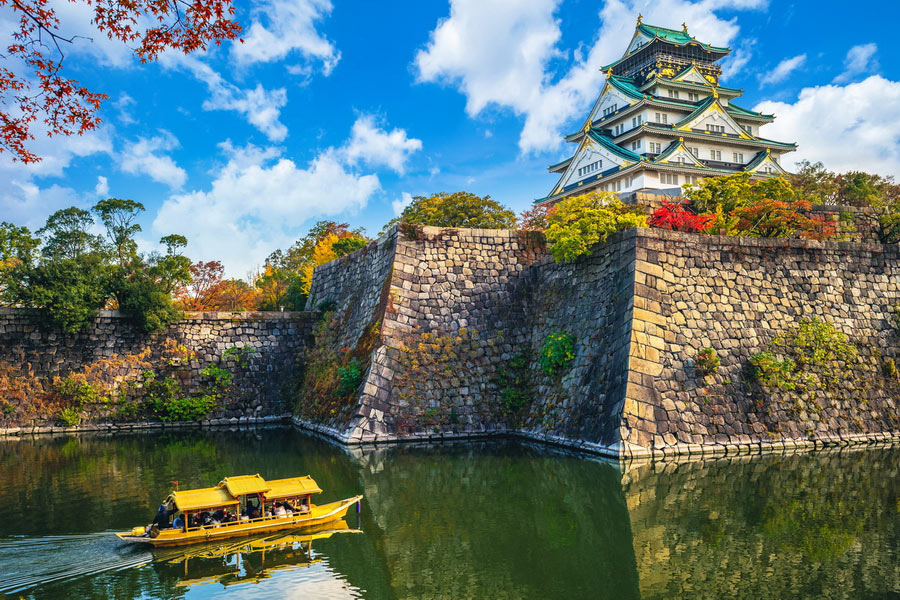
With its fortified walls and a moat, Osaka Castle exudes a formidable fortress's aura. While admission to the park is free, access to specific exhibitions requires a fee. The castle showcases a vast collection of artworks and military artifacts. This fee also grants entry to the observation deck, providing breathtaking views of the castle and its surroundings.
Hozen-ji Temple
When strolling through the covered galleries of Dotonbori, a visitor is likely to come across Hozen-ji in a back alley. Although small, this temple is worth your time, especially if you want to escape neon lights and billboards.
The Lion of the Namba Yasaka Shrine
Not far from the bustling streets of the Namba ward, you will find the distinguished Namba Yasaka Shrine. The hallmark of the shrine is a building in the shape of a lion – Ema-Den.
Top Spots for the Osaka Panoramic Views
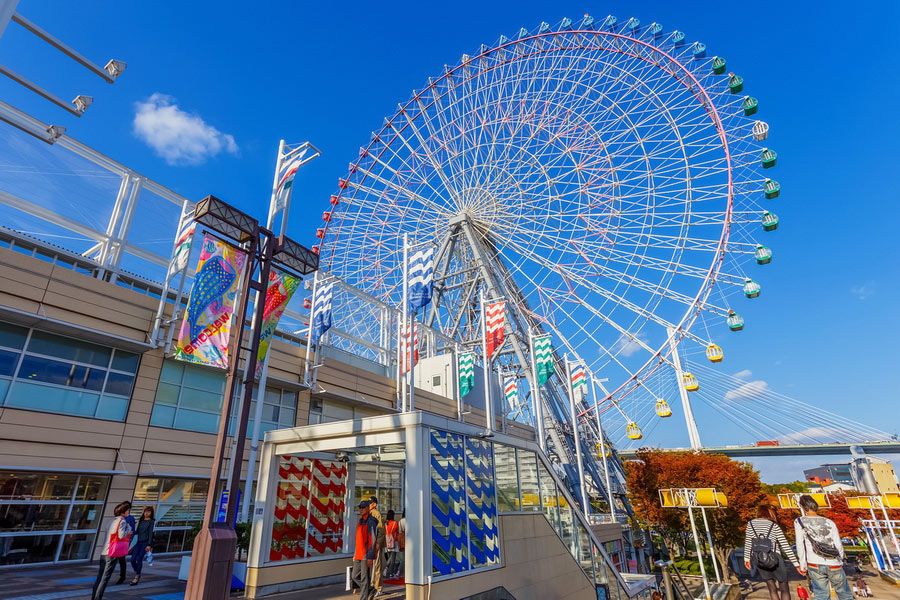
While Abeno Harukas and Tsutenkaku boast stunning city views from above, make sure to visit other observation decks and structures that provide similar experiences.
Abeno Harukas
Abeno Harukas is one of the tallest buildings in Osaka with an observation deck on the 60th floor and a sleek and modern design. But that’s not all. The building also has a hotel, offices, a department store, a restaurant, and a garden. It’s a perfect place to soak up the Osaka views and relax.
Kuchu Teien Observatory
Kuchu Teien is another soaring building with an observatory deck suspended between two towers. Its modern structure makes it more intriguing. Many visitors praise the tower for Osaka’s stunning vistas, especially at night.
Tsutentaku Tower
Tsutentaku Tower stands high in Shinsekai, the old neighborhood of Osaka. Although the observation deck is not too tall, it’s a definite symbol of the district. The third floor offers a small exhibition of different items, telling visitors the vibrant history of Shinsekai.
Tempozan Ferris Wheel
Another way to get a good view of Osaka from 112 meters is to ride the Tempozan Ferris Wheel. Whether you opt for a see-through or standard cart, you are sure to catch all the waterfronts and magnificent city lights.
Umeda Sky Building
Umeda Sky Building is very much recommended for the Osaka skyline and sunset experience. Although not the tallest building in Japan, it stands out with its ultra-modern design. Silver walls shine beautifully in the sunlight, and Umeda Sky is mind-blowing when the city goes dark.
Hep Five Ferris Wheel
Hep Five is a giant Ferris wheel amidst skyscrapers. Like the Umeda Sky Building, it is one of the Umeda attractions in the HEP FIVE shopping center. Ride one of the 52 gondolas and admire sweeping views or the sunset of Osaka.
Sakishima Cosmo Tower Observatory
Standing over Osaka Bay, the Cosmo Tower overlooks the Osaka Bay surroundings from the 55th floor. The rotating observatory is not the only thing to do there. The building has plenty of offices, shops, entertainment facilities, and restaurants.
Museums to Visit in Osaka
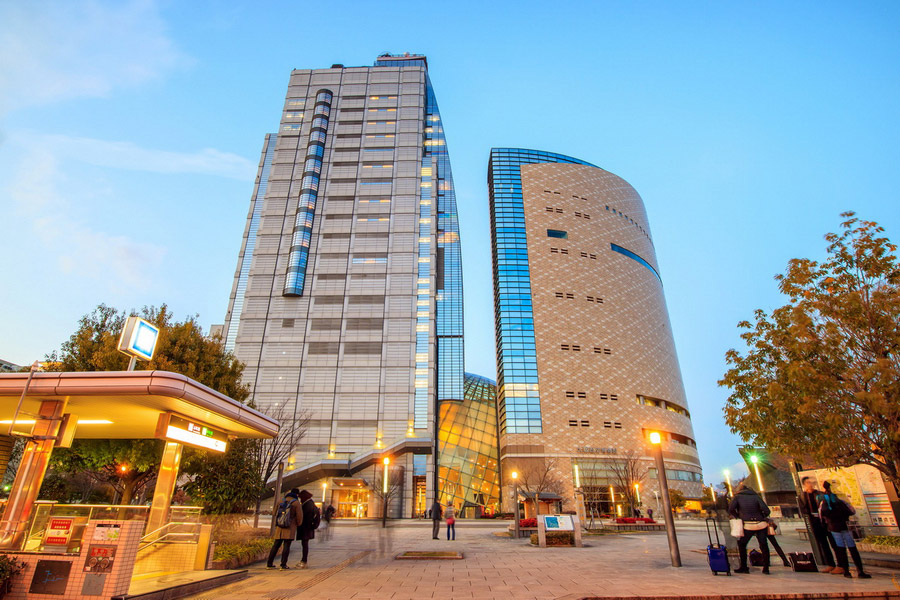
While Osaka’s number of museums and art galleries is by no means lacking, it’s certainly true that too many cultural institutions can blow up one’s brain when it comes to narrowing the choice down. The diversity of museums is big in terms of location spread across central Osaka, but also with regard to a subject. There are leading art players like the Osaka City Art Museum and the National Museum of Art. Yet there are smaller exhibitions like the famed Fujita Museum and Kamigata Ukiyoe Museum, – as well as those concerned with history and science. No matter what you fancy, there is a museum to wander through – find your picks for the best of them below.
- Osaka Museum of History. Located near Osaka Castle, this museum reveals a fascinating history of Osaka from the 7th century. The highlights of the museum are detailed miniatures from various times and regions.
- Osaka Museum of Housing and Living. Another history museum from the Edo period with life-size replicas of streets, houses, and shops is the Osaka Museum of Housing and Living.
- The Osaka Mint Museum contains a solid collection of coins and medals. The museum surroundings become a hanami, cherry blossom viewing spot, in late March and early April.
- One of the best ceramic collections in the world is in the Museum of Oriental Ceramics, encompassing ancient artifacts and new items from Japan, China, and Korea.
- Tsunami and Storm Surge Disaster Prevention Station shows how Osaka fights tsunamis and earthquakes. It also has an earthquake simulation platform and educational tips on responding to natural disasters.
- The National Museum of Art can be a good escape from the humid heat in Osaka since all three exhibition halls are underground. Besides, you can enjoy the paintings of Picasso, Ernst, and Cezanne.
- The International Peace Center or Peace Osaka emphasizes the city's destruction during WW II. It highlights the tragedy of war and the importance of peace.
- Kamigata Ukiyoe Museum in the middle of Namba is about woodblock prints, mostly depicting the kabuki theater and its actors. Visitors can even attend the woodblock printing workshop.
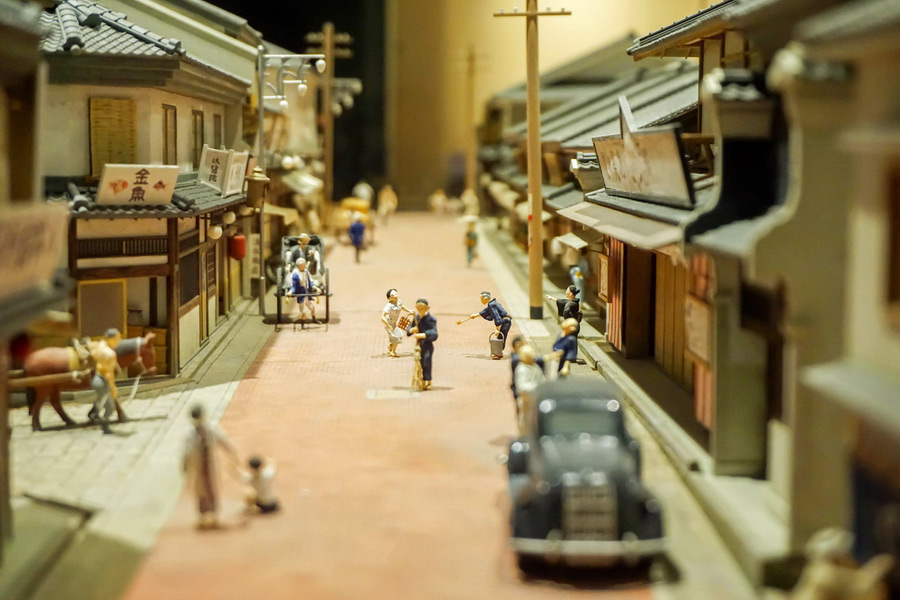
Theaters in Osaka
While some might be in doubt about attending a Japanese theater due to a language barrier, we are here to tell you that the experience is worth it. Firstly, the theaters in Osaka listed below cater well to international audiences. Secondly, Osaka is renowned for its humorous spirit, and even its unique dialect is perceived as funny in Japan. Thus, you will have a hearty laugh and gain a deeper understanding of Japanese culture after visiting a theater in Osaka.
Nanba Grand Kagetsu renders a variety of comedy genres that will make you burst into a laugh. This comedy theater welcomes the best Japanese comedians on its stage who perform daily.
- National Bunraku Theater. The famed puppetry performance known as bunraku in Japanese emerged in Osaka at the beginning of the 17th century. The mastery of puppeteers manipulating puppets and chanters narrating the story is truly appreciable and enjoyable.
- Cool Japan Park Osaka. Located within the grounds of Osaka Castle Park, this 2019 theater presents powerful live performances with everything a demanding audience needs – humor, excitement, and Japanese culture.
- French Drop. If you like magic shows, French Drop is a must-go for evening entertaining. Many say that Osaka’s illusionists are a blast. They perform astonishing tricks in English, and the drinks during the show are free.
Entertainment, Parks, and Shopping in Osaka
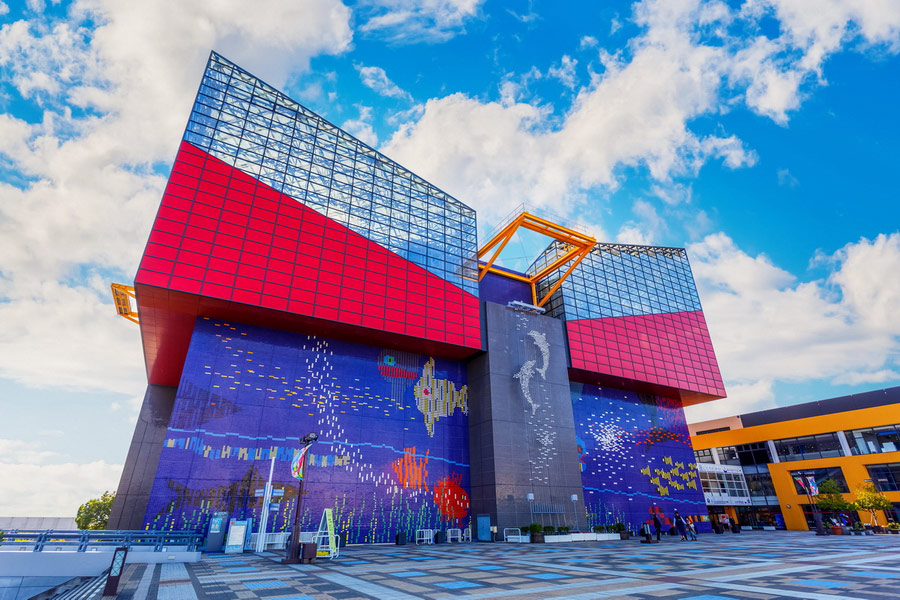
In this charming and relaxed city, you will find something to capture your fancy, regardless of your interests. Osaka has a diverse range of sights to keep you entertained and engaged.
- Kids Plaza Osaka
What is it? Kids Plaza Osaka is a unique and educational harbor, focusing on a fun, hands-on learning experience for children of all ages.
Why go? Another must-visit stop for parents with small children. It features many interactive exhibits, workshops, and activities that allow kids to explore different themes, from science and technology to art and culture. - Osaka Aquarium Kaiyukan
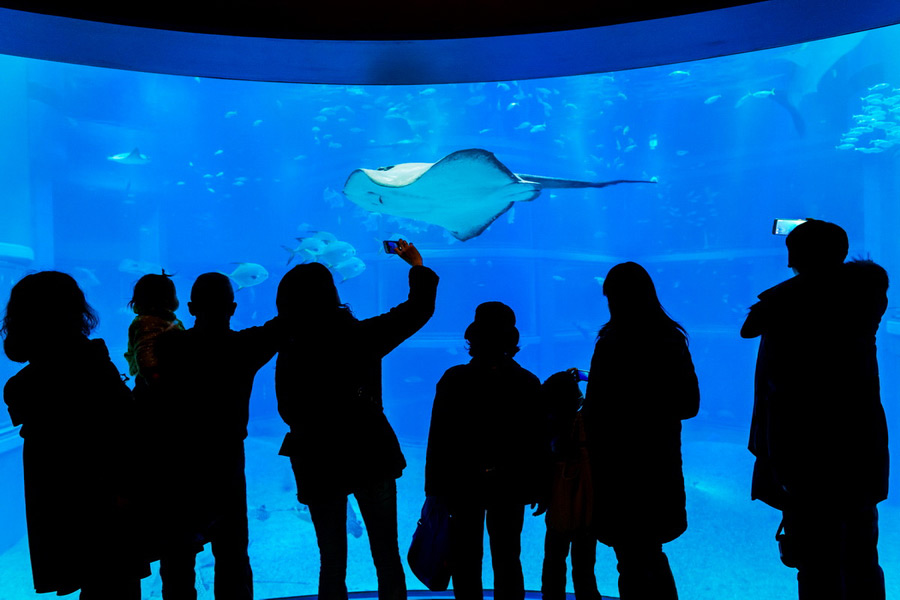
What is it? One of the largest aquariums of marine species in the world.
Why go? Over 2 or 3 hours, you can see a wide range of marine life, including 30,000 creatures (marvelous whale sharks, ringed seals, crested penguins, and many more). The seals are especially fun and curious as they may come closer to the glass. It's a must-go for families. - Ninja-do
What is it? Ninja-do is a school where visitors can explore the world of ninjas.
Why go? Both parents and their kids will love to learn about ninja skills and weapons and try on the ninja outfit. Participants are allowed to take great photos and videos. - Kyocera Dome Osaka
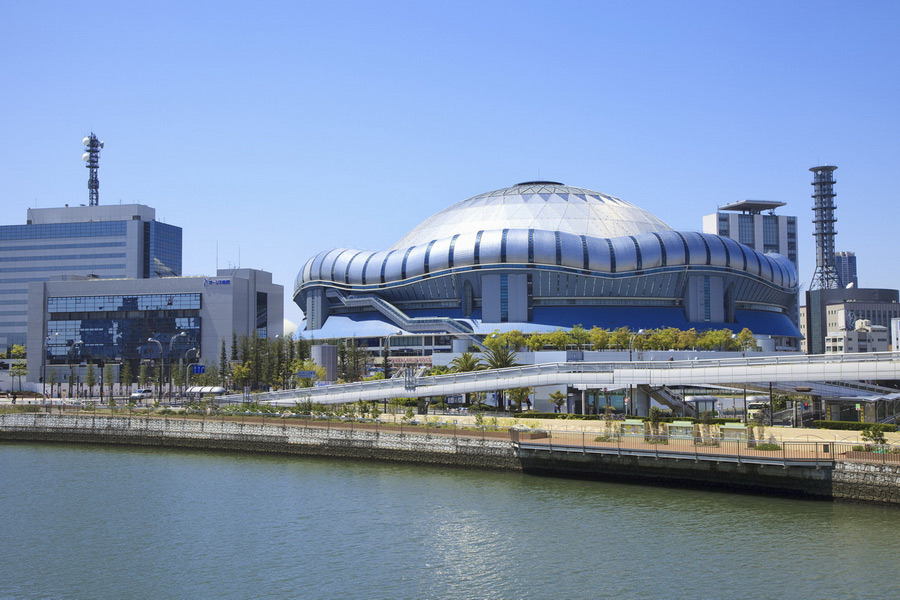
What is it? Kyocera Dome Osaka is a baseball stadium, concert, and venue for different events. The dome can seat 36,000 people.
Why go? The futuristic design of the whole construction makes it attractive for touring. Your arrival in Osaka may coincide with the baseball tournament, so there's a chance you may catch the game. Also, keep an eye out for the amazing concerts at the Dome. - Mipig Café Osaka
What is it? It’s an animal café in Osaka.
Why go? If you like interacting with cute animals, that’s the hangout point you can’t miss. As you savor your donut and drink, friendly piggies will come over to you and comfortably sit on your lap. It’s fun and very relaxing. - Universal Studios Japan
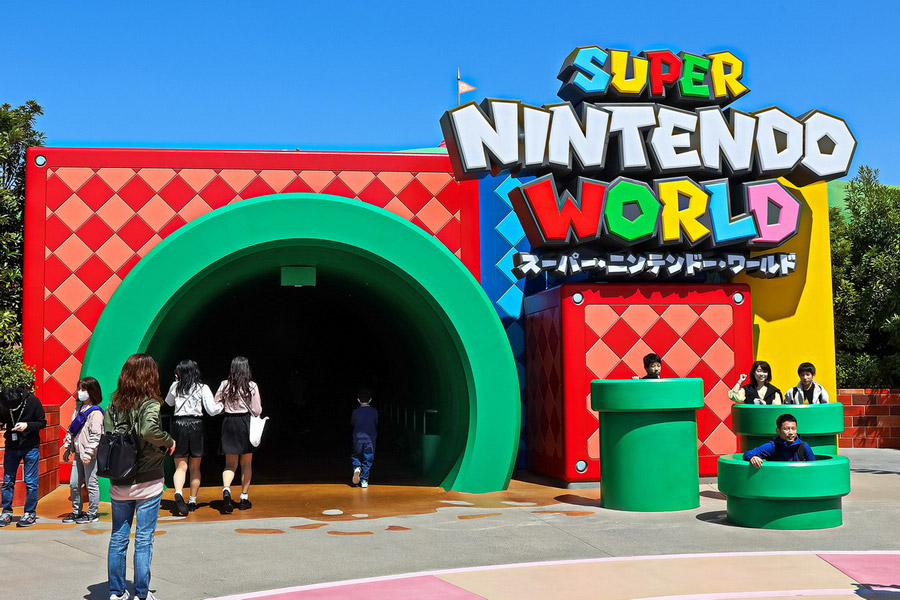
What is it? Universal Studios Japan is a major theme park in Osaka.
Why go? It features attractions such as Super Nintendo World, Minions, and Hogwarts. Located in the Osaka Bay Area, it is effortless to reach. You can see most attractions in a single day if you go there early and stay late. The park opens at 7:00 AM and closes at 10:00 PM. - ROR Comedy Club
What is it? It’s an English-language stand-up comedy club.
Why go? For those looking for something more than an ordinary bar, the ROR Comedy Club is a great choice. The stand-up acts are very entertaining and will surely make you laugh. The bar upstairs serves delicious and inexpensive drinks. - Nara Park
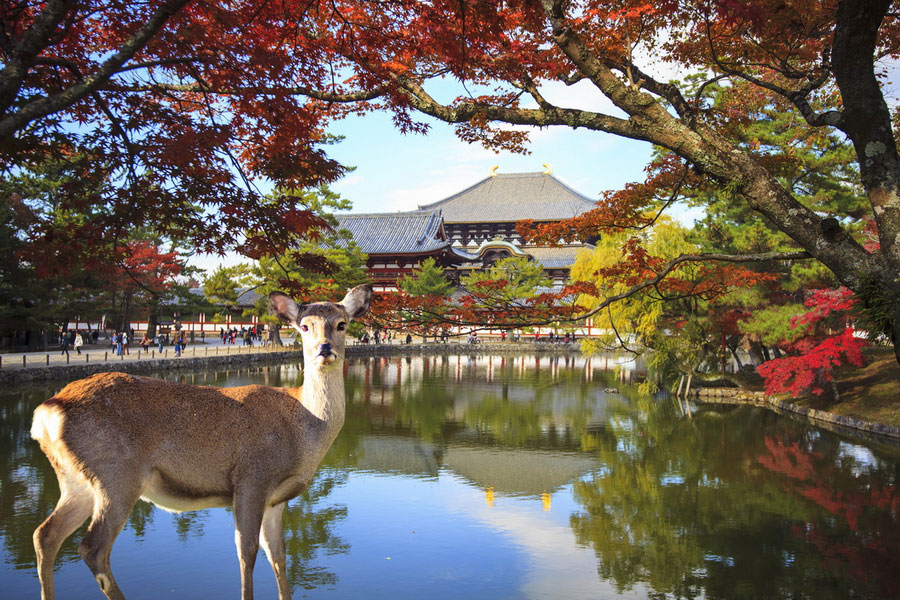
You may fit in Nara Park in the city of Nara when staying in Osaka for several days. This is a picturesque territory with stunning and sensational temples and deer just walking around the park freely. You will need around an hour to get to Nara. Plan at least 6 hours for the trip, including the way back and dinner.
Shopping Districts in Osaka
Osaka prides itself on world-class department stores, malls, specialized shopping streets, and boutiques. The Yodo River divides downtown Osaka into northern and southern regions.
Luxury Department Stores
The Umeda District in northern Osaka is home to the headquarters and branches of department stores such as Hankyu Main Store, Hanshin Department Store Umeda, and Daimaru Umeda.
Giant Shopping Malls
If you prefer to shop in one location, head to one of the shopping malls in Osaka. Grand Front Osaka is in the northern part, while Namba Parks is to the south. The latter mall displays interesting architecture and environmentally friendly design. Namba Parks is great for commerce and recreation.
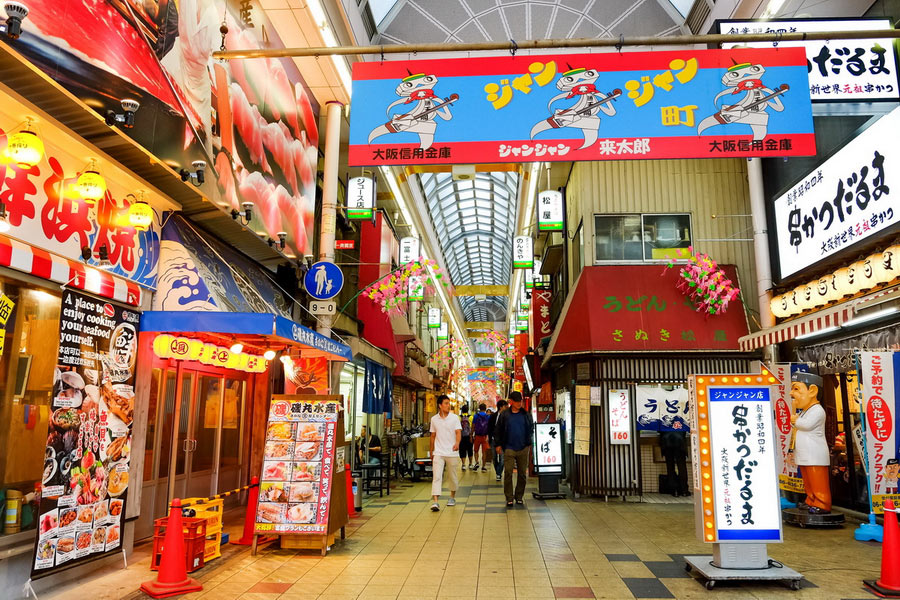
Specialized Shopping Arcades
Roofed shopping galleries or shotengai are prominent features in the city's heart. Among the most notable examples are the two-kilometer-long Tenjinbashi-suji Arcade and Shinsaibashi-suji located in the Kita ward, dating back to the 18th century.
Youth Fashion Hub
In Osaka, the Amerikamura neighborhood, adjacent to Namba, is a vibrant youth fashion hub, comparable to Tokyo’s Harajuku. However, it is not just about fashion but the ultimate destination for music enthusiasts as well. You can find everything from musical instruments to audio recordings. If you are passionate about music, set aside a few hours to explore this vibrant hub.
Osaka’s Electric Town
Osaka has its district, Den Den Town, selling tons of electronics, including gaming items. In addition to electronics, the Town is a haven for anime and manga fans. The neighborhood is home to many specialty shops dedicated to anime merchandise, including figures, posters, and other collectibles. Visitors can even find manga cafes to relax and read their favorite manga series.
Rinku Town
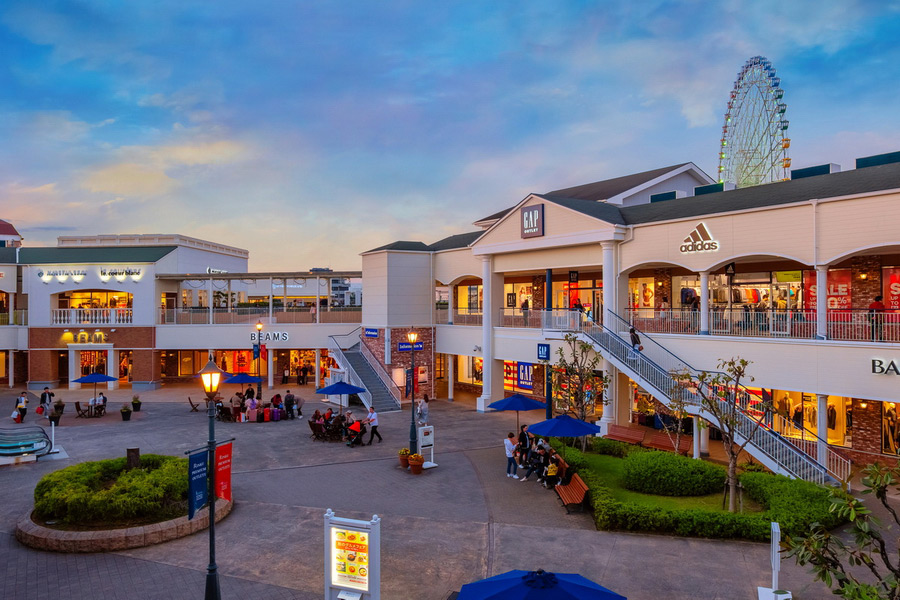
Rinku Town is just one station from Kansai Airport on the JR and Nankai lines. It is home to around 150 shops and stores, the observation wheel, and the seaside park.
Food in Osaka
With such a diverse culinary scene, Osaka is a city of myriad diners, fluctuating between Japanese street food in the Dotonbory downtown and the gourmet Kappo cuisine. Some have delicious beef dishes sourced from nearby Kobe, while others serve typical delicacies, like sushi, ramen, and udon noodles.
The concept of “Kuidaore,” so peculiar to Osaka, translates as “eat until you drop,” encapsulating the Osakan’s love of food. Many restaurants go far and beyond to satisfy the taste buds of locals, and foreign tourists benefit from that too. So, it’s no wonder that Osaka is considered the nation’s center for gastronomy.
If you haven’t yet researched what to eat in Osaka, here’s a list of tasty culinary delights for your appetite.
Takoyaki

Now increasingly common all over Japan, the birthplace of Takoyaki is Osaka. The dish is made from batter stuffed with boiled octopus and other ingredients, revealing the authentic flavor of Osaka.
Okonomiyaki
Okonomiyaki is sometimes called a “Japanese pizza.” However, it looks more like a fried pancake made with a mixture of various contents, with cabbage being the main ingredient.
Butaman
Among Osaka's highly sought-after specialties is Butaman, a pork steam bun. The contrast between the chewy dough and the delectable fillings is irresistible. After your first bite, you'll find yourself reaching for more.
Puffer Fish Hotpot and Sashimi
Fugu fish hotpot, called tecchiri in the Osaka dialect, is a famous gourmet and nutritious dish with plenty of vegetables. Rice soaked in dashi goes well with the meal. Interestingly, over 50% of Japan’s puffer fish consumers reside in Osaka.
Chiritori Nabe
Chiritori Nabe is another hotpot dish. Dashi broth is made from beef bones and used to stew beef meat slices and fresh vegetables. It can also be made with seafood, tofu, and vegetables.
Rice Omelets - Omu-rice
The story holds that the dish originated in Osaka in 1925 in a Western-style restaurant. Omu-rice is a Japanese variant of omelet with rice wrapped in egg and seasoned with tomato sauce or red ketchup.
Udon Suki
A hotpot dish, udon suki, consists of udon (buckwheat) noodles and seasonal vegetables boiled in a broth with seafood or meat. When drinking the soup, savor the flavors of different ingredients and the smooth texture of the noodles.
Kushikatsu
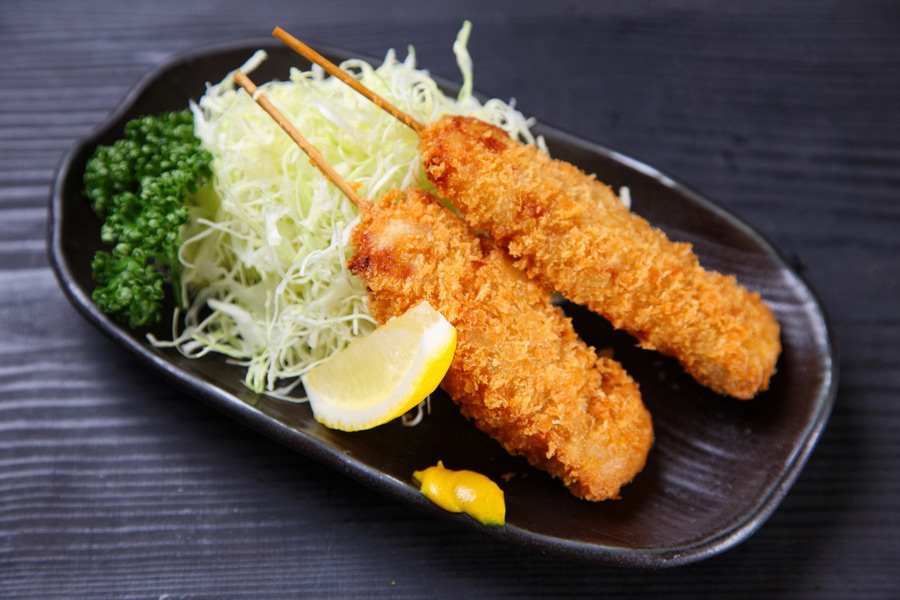
Kushikatsu, a perfect snack for beer, is a gourmet dish that can be found in Shinsekai near Tsuntekaku Tower. Although a simple dish made by skewering and deep-frying small pieces of meat and vegetables, it is a delicious specialty with a crunchy texture.
Ikayaki - Osaka’s Soul food
Speaking of Osaka’s gourmet food, one must not forget about Ikayaki. The term describes Osaka squid. It is a dish made from flour dough mixed with squid and herbs and pressed and grilled. It’s sold in great quantities at the Hanshin Department Store Umeda.
Getting Around Osaka
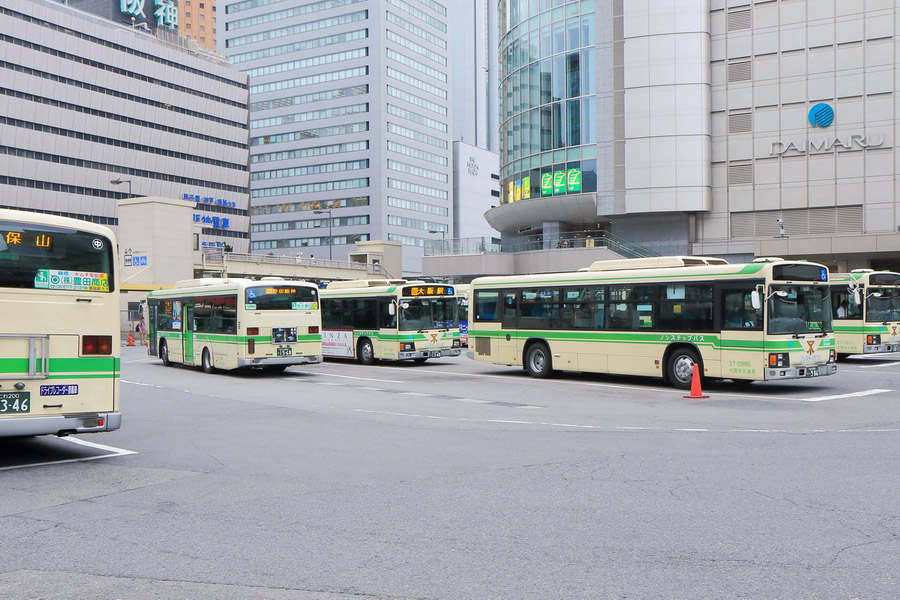
Getting around Osaka is easy, thanks to its comprehensive public transportation infrastructure.
Visitors can choose from subways, trains, buses, trams, taxis, bicycles, and even water buses.
The Fare
You can always pay with cash when buying a single-trip ticket, but this method is inconvenient for traveling in Osaka. Therefore, we recommend using the following types of options.
Prepaid IC Cards
Icoca is a prepaid IC card usable across Osaka, Kyoto, and Kobe. It works for trains, subways, and buses; you can buy items at stores displaying the IC sign or sticker.
The card can be purchased and topped up at automated ticket machines at JR West and Midori-no-madoguchi (JR ticket counters). The cost of the card includes a refundable deposit, that can be reclaimed upon returning the Icoca card to a JR ticket counter or office. Children between 1 and 12 years can obtain an Icoca card for half the price of an adult ticket.
If you have previously visited Japan and have a Tokyo Pasmo or Suica card, you can keep using and recharging that pass instead of getting an Icoca card. Additionally, Icoca is valid in other cities.
- JR Pass. Available exclusively to tourists, the JR Pass offers significant time savings for travel on JR lines, including the Shinkansen (excluding Nozomi and Mizuho). Available in one-, two-, or three-week durations, it is a seamless smart card for tourists exploring Osaka and frequently utilizing train services. Additionally, you can upgrade it to Green Class (first class) for a more comfortable journey.
- Osaka e-Pass and Osaka Amazing Pass. Osaka e-Pass helps foreign visitors spend less on public transportation and attractions. It comes in one-day and two-day passes, providing unlimited travel on the Osaka Metro Line and Osaka Bus Lime. On top of that, it unlocks free entry to over 20 sightseeing landmarks in Osaka. For more information, refer to the official website. Like the Osaka e-Pass, the Amazing Pass is issued for one or two days to ride a subway, tram, or bus network and access the most-visited attractions.
- The Enjoy Eco Card, a day pass, allows unlimited rides on the subway and most city buses in Osaka, along with discounts at 30 attractions. It can be conveniently purchased from ticket vending machines located at subway stations.
Railways
If you're traveling through Osaka, the best way to get around is by rail. It's fast and cheap, affording an awesome network of subway lines, suburban trains, and regional trains from different companies, all integrated into a unified system. The junction stations are very convenient for hopping from one train to the next without trouble.
Subways
The subway system, with its nine lines, is the most popular means of transportation in Osaka. Each line has its own color and letter. Tourists typically need to learn how to navigate the two lines: the red Midosuji Line and the green Chuo Line. These lines traverse the city both north to south and east to west.
The Midosuji Line spans 20 stations and is the busiest. It connects all the city's main railway hubs - Shin-Osaka, Umeda, Namba and Tennoji stations. It also allows you to quickly reach Osaka's emblematic attractions, such as Dotonbori Street, Umeda Sky Building and Abeno Harukas, Tsutenkaku Tower, Tennoji Zoo, Shitenno-ji Temple, and others.
The Chuo Line, with 14 stations, connects the Osaka Castle area to the Osaka Bay area, home to the Osaka Kaiyukan Aquarium. You can transfer to the Midosuji Line at the Hommachi stop.
Generally, the subway operates from 5:00 AM to 1:00 AM. For specific schedules and additional details, please refer to the official website. Peak hours are from 7:30 AM to 9:30 AM and 5:00 PM to 8:00 PM.
The subway fare is based on how far you go since the city is split into five sectors. You should buy a ticket to the station you're heading to at one of the ticket machines at the subway station. If you're unsure how much it costs, just start with the cheapest amount. Once you get to your stop, you can adjust the fare at the fare machine by putting your ticket in and paying the rest. Don't forget to take the receipt, as you need it to get out of the station.
Taking a ride with an IC card makes everything so much easier. All you need to do is tap your card on that reader at the turnstile when going in and out of the subway station. The card will automatically deduct the ticket fare, eliminating the need for physical tickets or cash transactions.
Trains
In Osaka, you can transfer to a JR West train to explore the surrounding cities or travel further out. Shin-Osaka Station has Shinkansen lines that zip you to Nagoya, Tokyo, Okayama, Hiroshima, and Fukuoka. Besides JR West, the following private train companies operate in Osaka, making it a breeze to travel around the region.
- Hankyu Railway;
- Nankai Electric Railway;
- Keihan Electric Railway;
- Kintetsu Railway;
- Hanshin Electric Railway.
Traveling within the city center is best by the JR West Osaka Loop Line, which perfectly complements the subway system. It has 19 stations, and 12 of them connect to additional train and subway lines, providing coverage across most parts of Osaka and intercity connection.
The Osaka Loop Line has two directions trains go: the inner circle (Uchi mawari) runs counterclockwise, and the outer circle (Soto mawari) runs clockwise. Consider which direction is more convenient for your travel plans to ensure a speedy arrival at your intended station.
Besides the Osaka Loop Line, tourists can leverage other routes to get to Kansai International Airport. There are two JR West lines: the Airport Express HARUKA and the Kansai Airport Rapid. The Limited Express Rapi:t lines from Nankai Electric Railway will do the same too. If you're into theme parks, the JR Sakurajima Line will take you right to the doorstep of Universal Studios Japan from Nishikujō Station on the Osaka Loop Line.
City Buses
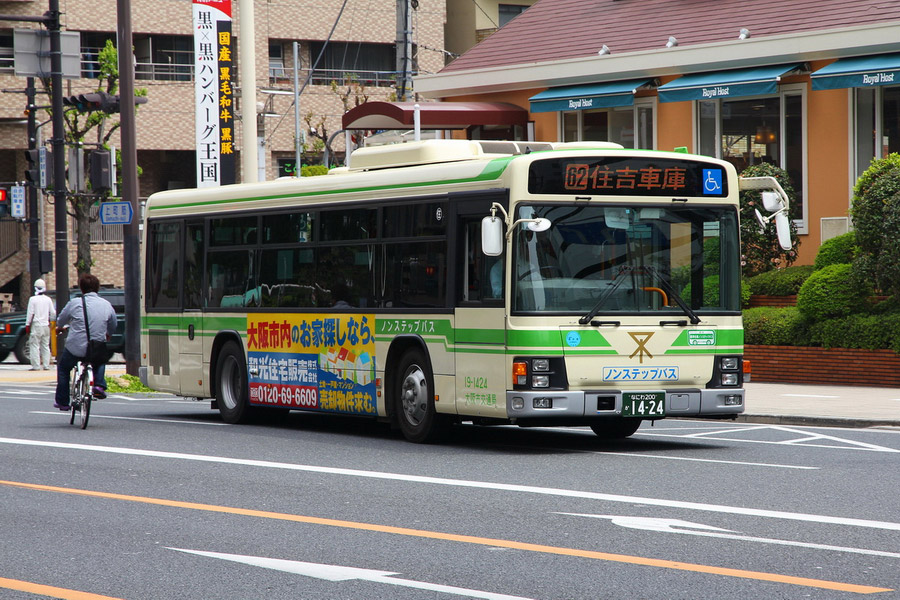
While tourists usually prefer the subway, it's essential to mention Osaka's extensive bus network. Boarding the bus requires entering through the rear door and exiting through the front. It's worth noting that not every bus stop is a must-stop. To ask the driver to let you off at your next stop, press one of the red buttons on the upright metal posts throughout the bus.
The fare is fixed within the city center, whereas outside it depends on the distance traveled. Kids under 12 years old are eligible for a 50% discount on the fare. Two children between 1 and 5 years can ride for free with an adult. You can pay with cash at the fare machine near the driver, but paying your Osaka bus fare with the IC card is way easier.
See the sights on the Osaka UMEGLE bus
Hop on a light green UMEGLE bus to tour Osaka's iconic landmarks. The buses run through Kita (Umeda), making 12 stops. You can buy a single-trip ticket if you're taking a few rides. But if you're planning to spend a lot of time in Umeda, we recommend getting a day ticket. It costs a little more but lets you hop on and off the buses all day.
Trams
The city has two tram lines operated by the Hankai company. They run from north to south of Osaka, also connecting with the Sakai neighborhood. Hankai tram lines run between Ebisucho Station and Abikomichi Station; the Uemati lines run between Tennoji-Ekimae and Hamadera-Ekimae.
Trams have a fixed fare payable by cash or IC card. Or, you can pick up a 1-day free pass, Take Take, for unlimited rides available at the stations Tennoji-Ekima, Abikomichi, Shin-Imamiya-Ekimae, and Hadera-Ekimae.
Taking a Taxi in Osaka
Several taxi companies serve the city, so finding a cab here is a piece of cake. You can usually find them parked near train and bus stations, as well as near major attractions and big public buildings. You can also hail a taxi on the street by signaling one with your hand. Look for the red light in the bottom left corner of the windshield; that means the cab is empty.
Taxi drivers in Osaka are required to use the meter. The standard fare during the daytime with a start fare is 660 yen for the first two kilometers and then 80 yen per additional 296 meters. Be sure to have cash when taking a taxi, although some drivers accept credit cards. Tipping is not a tradition in Japan, but rounding up the fare is OK. There's an increase of 20% during nighttime, from 23:00 to 5:00 AM. In addition, medium and large taxis will charge slightly higher costs.
Some taxi drivers can converse in English. Yet it's best to have the destination name and street written in Japanese.
Finally, you can certainly utilize the ride-hailing app Go or Uber anywhere in Japan.
Water Buses
In Osaka, a water bus is primarily used for leisurely cruises. However, that doesn't mean you can't use it to reach your travel point. The Aqua Liner water bus, running along the Ogawa River through the city center, is a convenient option. Boarding the bus is easy; you can find the schedule, traffic pattern, and fare on the carrier’s website. Additionally, the Aqua Line has two more services:
The Aqua Mini shuttle boat offers connections between Osaka Castle, Tazaemonbashi on the Dotonbori Canal, and Minatomachi, situated in Minami and part of the Minatomachi River Place mixed-use complex.
Santa Maria is a replica of Christopher Columbus's ship. The ship cruises Osaka Bay and can be boarded at the west pier of the Osaka Kaiyukan Aquarium and Tempozan Harbor Village.
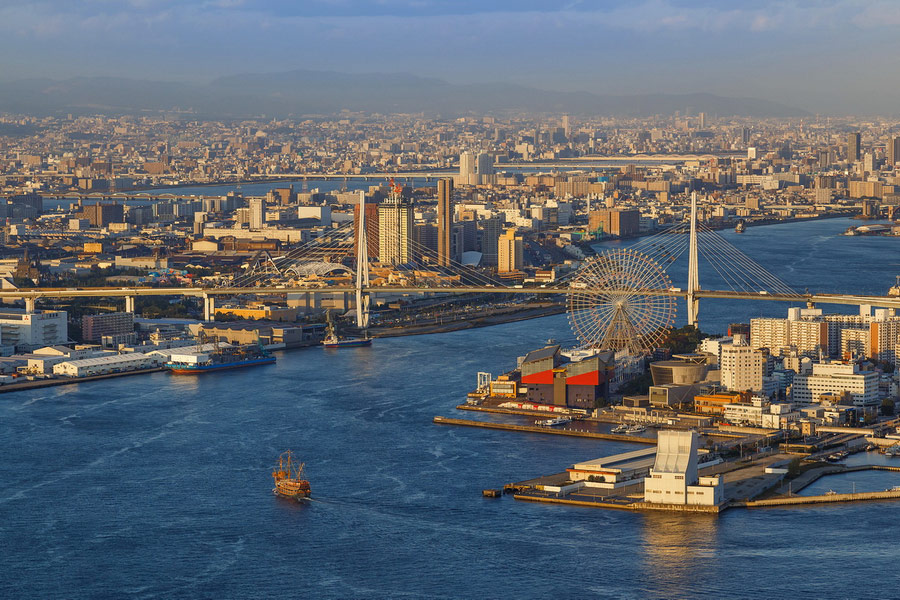
Renting a Bicycle in Osaka
Osaka boasts a few bicycle rentals. For example, HUBchari has around 250 stations for standard and electric bikes throughout the city. Osaka Bike Share services multiple stations at the subway exit.
Hello Cycling is available in many Japanese cities. This provider includes over 160 docks. To explore Umeda, be sure to ride the Umegle-chari bikes.

